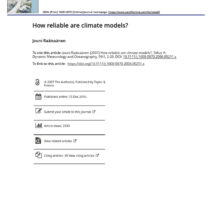As global discourse on climate change intensifies, the implications of sulfur pollution control present a nuanced paradigm that warrants thorough examination. The intrinsic relationship between air quality management and climatic patterns raises profound questions: Could the curtailment of sulfur emissions be inadvertently accelerating global warming? Understanding this connection necessitates a foray into both atmospheric science and environmental policy.
**The Role of Sulfur Compounds in the Atmosphere**
Sulfur dioxide (SO2), a common byproduct of anthropogenic activities such as fossil fuel combustion, has historically been recognized for its deleterious impacts on air quality and public health. However, its role extends beyond immediate ecological concerns. When released into the atmosphere, sulfur dioxide reacts with water vapor to form sulfate aerosols. These aerosols possess significant reflective properties, effectively scattering sunlight and contributing to global dimming—a phenomenon that temporarily mitigates surface warming.
By absorbing and scattering solar radiation, sulfate aerosols exert a cooling influence on the Earth’s climate system. This interplay means that regions with higher levels of sulfur compounds often experience reduced surface temperatures. Consequently, the reduction of these emissions, though beneficial in terms of air quality and health, may lead to an unanticipated feedback loop that exacerbates global warming. The dichotomy between improving immediate environmental conditions and its potential long-term climatic repercussions is a sheer paradox in contemporary environmental policy.
**The Farnborough Effect Revisited**
In the wake of stringent regulations aimed at curtailing sulfur emissions, some researchers have observed intriguing climatic shifts. This phenomenon, informally dubbed the “Farnborough Effect,” refers to the increased rates of warming observed in regions where sulfur pollution controls were vigorously implemented. After decades of sulfur being quelled, the abrupt cessation of cooling could lead to pronounced rises in surface temperature as natural variability aligns unfavorably with anthropogenic influences.
One of the most compelling illustrations of this effect materialized following the implementation of the Clean Air Act in the United States during the 1970s. While the legislation fundamentally improved air quality, it inadvertently allowed for a clearer atmosphere, consequently removing the cooling influence of aerosols. The result was an observable uptick in warming trends, leading to discussions in the scientific community about potential unintended consequences of pollution control measures.
**A Delicate Balance: Health vs. Climate**
The irony of sulfur pollution control is stark: policies implemented to safeguard human health and environments may inadvertently destabilize climatic equilibrium. The substantial reduction of sulfate aerosols alleviates a significant portion of atmospheric haze, exacerbating the greenhouse effect. Infrared radiation, previously partially shielded by these particles, is now unencumbered, enhancing surface warming.
It is essential to note that while these reductions provide substantial public health dividends—less respiratory disease, improved visibility, and enhanced quality of life—the interconnectedness of atmospheric components demands a holistic approach to climate policy. Health benefits derived from reduced sulfur must be weighed against potential exacerbations of climate instability, highlighting the need for synergistic solutions that address both public health and climatic challenges.
**Future Pathways: Integrative Solutions**
Moving forward, the challenge lies in establishing integrative frameworks that account for sulfur emissions without eliciting adverse climatic ramifications. Strategic innovations may include promoting cleaner technologies and accelerating the transition to renewable energy sources, consequently reducing reliance on fossil fuels that emit sulfur compounds. Additionally, employing geoengineering strategies to manage the optical properties of the atmosphere could simultaneously mitigate warming without reverting to unsustainable sulfur emission practices.
Scientific investigations continue to advocate for a diversified approach, encompassing both sulfur management and other greenhouse gas reductions. By harnessing interdisciplinary research, policymakers can construct adaptive strategies that echo notions of sustainability without compromising on health benefits derived from cleaner air.
**International Cooperation and Ethical Considerations**
Climate change is an inherently global issue, demanding international cooperation that transcends borders. Countries must engage in transparent dialogue, sharing both successes and challenges related to sulfur pollution control and its climatic implications. Ethical considerations must inform these discussions, ensuring equity in the burden borne by industrial nations versus developing countries. Equitable solutions must be prioritized to ensure a balance between economic growth and environmental stewardship.
**Conclusion: A Call for Informed Action**
In summary, the relationship between sulfur pollution control and global warming is intricate and multifaceted. Policymakers must remain vigilant, recognizing that the eradication of one peril may introduce another. The potential acceleration of global warming due to sulfur pollution controls necessitates an informed, adaptive approach to environmental regulation. As society pivots towards sustainability, an awareness of these interconnected elements will be paramount in crafting resilient, holistic responses to climate change.
This ongoing discourse should compel stakeholders to examine not only the visible effects of air quality regulations but also their global climatic ramifications. By addressing sulfur emissions through progressive, integrative solutions, humanity can find a pathway that reconciles immediate health benefits with the longer-term imperatives of climate stability.







